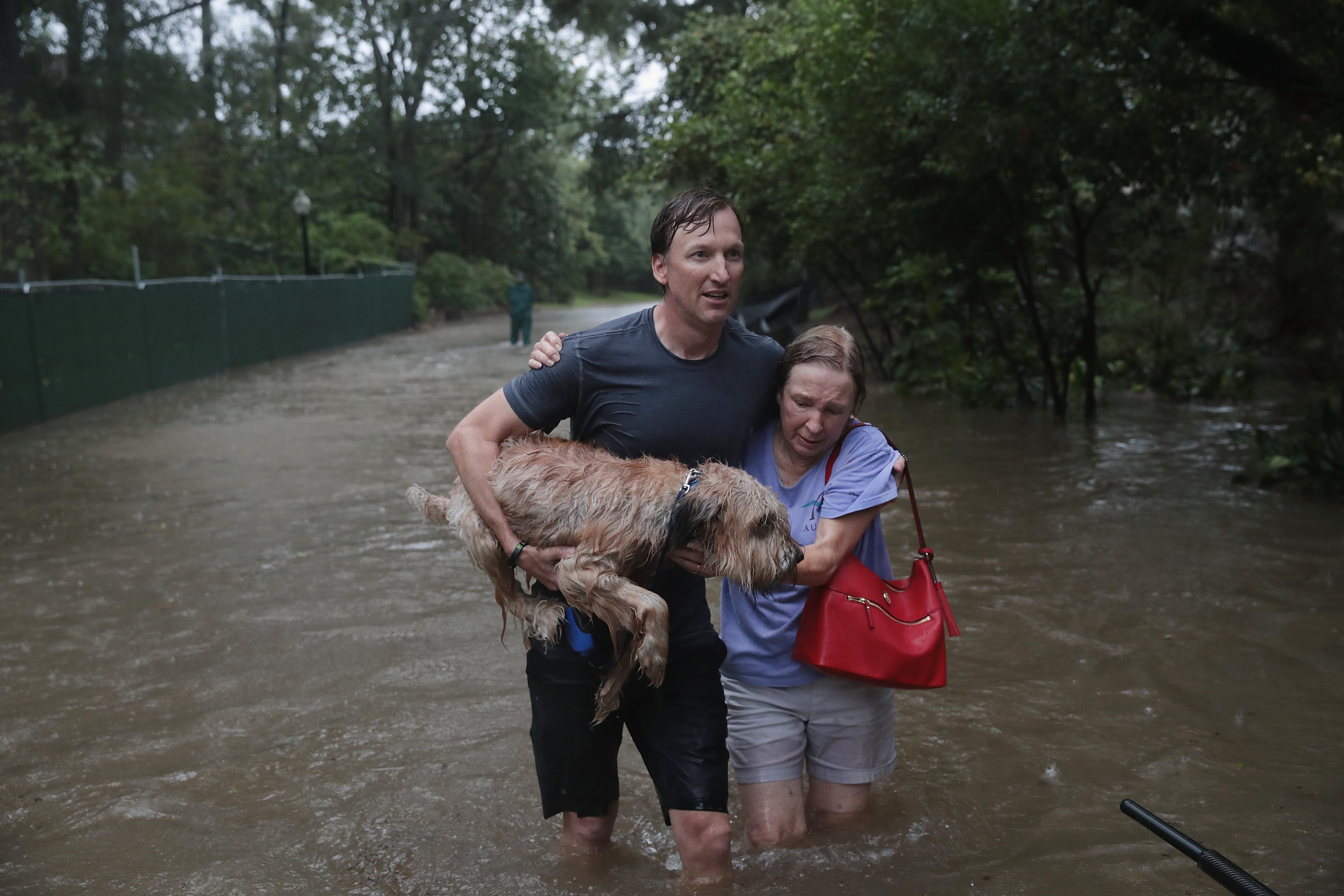FEMA predicts 30,000 Texans will need shelter in Harvey aftermath


At a news conference Monday morning, FEMA Administrator Brock Long said that Tropical Storm Harvey will likely drive at least 30,000 people to temporary shelters as record floodwaters inundate Houston, America's fourth-largest city, and a widening area of Texas. "This disaster's going to be a landmark event," Long said. More than 30 inches of rain have fallen in parts of Houston and Harris County since Saturday, and some areas are expected to get up to 50 inches total over the week, exceeding the average annual rainfall in Houston. Exacerbating the flooding in parts of Houston, the Army Corps of Engineers started releasing water from the Addicks and Barker reservoirs in west Houston, to avert worse flooding if the dams failed.
The Brazos River, southwest of Houston, will rise to 59 feet by Tuesday, a new record, the National Weather Service predicted, prompting a mandatory evacuation in parts of Fort Bend County. "A flood of this magnitude is an 800-year event, and it exceeds the design specification of our levees," said County Judge Robert Hebert. So far, about 50 Texas counties are affected, and Brad Kieserman, the Red Cross official running the response to Harvey, said the floodwaters won't recede for weeks.
"We will be flooded well past Labor Day," Kieserman told NPR. "The area that's going to be flooding is about the size of Lake Michigan. Hurricane Harvey has effectively turned South and Central Texas into a lake the size of Michigan. And I don't think that's an exaggeration. Every leading indicator we're seeing — the number of people in shelters, the number of people calling for rescue, the river levels that are rising and the speed, the rainfall totals — everything is indicating that this is as catastrophic as you could possibly imagine from a Category 4 storm."
The Week
Escape your echo chamber. Get the facts behind the news, plus analysis from multiple perspectives.

Sign up for The Week's Free Newsletters
From our morning news briefing to a weekly Good News Newsletter, get the best of The Week delivered directly to your inbox.
From our morning news briefing to a weekly Good News Newsletter, get the best of The Week delivered directly to your inbox.
A free daily email with the biggest news stories of the day – and the best features from TheWeek.com
Peter has worked as a news and culture writer and editor at The Week since the site's launch in 2008. He covers politics, world affairs, religion and cultural currents. His journalism career began as a copy editor at a financial newswire and has included editorial positions at The New York Times Magazine, Facts on File, and Oregon State University.
-
 How to financially prepare for divorce
How to financially prepare for divorceThe Explainer Facing ‘irreconcilable differences’ does not have to be financially devastating
-
 Why it’s important to shop around for a mortgage and what to look for
Why it’s important to shop around for a mortgage and what to look forThe Explainer You can save big by comparing different mortgage offers
-
 4 ways to save on rising health care costs
4 ways to save on rising health care costsThe Explainer Health care expenses are part of an overall increase in the cost of living for Americans
-
 Nobody seems surprised Wagner's Prigozhin died under suspicious circumstances
Nobody seems surprised Wagner's Prigozhin died under suspicious circumstancesSpeed Read
-
 Western mountain climbers allegedly left Pakistani porter to die on K2
Western mountain climbers allegedly left Pakistani porter to die on K2Speed Read
-
 'Circular saw blades' divide controversial Rio Grande buoys installed by Texas governor
'Circular saw blades' divide controversial Rio Grande buoys installed by Texas governorSpeed Read
-
 Los Angeles city workers stage 1-day walkout over labor conditions
Los Angeles city workers stage 1-day walkout over labor conditionsSpeed Read
-
 Mega Millions jackpot climbs to an estimated $1.55 billion
Mega Millions jackpot climbs to an estimated $1.55 billionSpeed Read
-
 Bangladesh dealing with worst dengue fever outbreak on record
Bangladesh dealing with worst dengue fever outbreak on recordSpeed Read
-
 Glacial outburst flooding in Juneau destroys homes
Glacial outburst flooding in Juneau destroys homesSpeed Read
-
 Scotland seeking 'monster hunters' to search for fabled Loch Ness creature
Scotland seeking 'monster hunters' to search for fabled Loch Ness creatureSpeed Read
